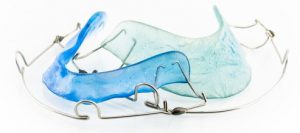Orthodontics and braces treatment is not just for kids and adolescents anymore. In fact, a significant percentage of patients who have orthodontic treatment are adults over the age of 21. With the latest techniques in orthodontics, you don’t have to worry about “metal-mouth,” “brace-face,” or other negative aspects often ascribed to traditional metal braces. Dr. Chris Murphy offers a variety of techniques that can help adults straighten their teeth in a comfortable, discreet way.
Please contact Murphy Orthodontics to schedule a complimentary consultation with Dr. Murphy. He will be happy to answer your questions on adult orthodontic treatments.
What Types of Braces are Right for Me?
Adult jaw bones are more mature than an adolescent’s, and therefore an orthodontic treatment plan may take a bit longer than usual, depending on the specific treatment you undergo. However, the trade-off is that adults often have more options than an adolescent – including treatments designed to be much less visible to others. These include clear and removable teeth aligners like Invisalign®, and more traditional braces options that put an innovative twist on the design to make them more comfortable and discreet. Take a look at the following types of braces that have become common options for adults, and follow the links for more information. Dr. Murphy can meet with you for an individual consultation to go over your treatment options in greater detail and help you determine what may be best for your needs.
Some of the more popular types of braces for adults at our practice include:
- Invisalign® Clear Teeth Aligners (removable, translucent aligners made of an advanced plastic material; no metal brackets or wires are utilized)
- Pitts 21™ Self-Ligating Braces (small brackets that usually do not require elastic bands; designed to provide a faster and more comfortable orthodontic treatment)
- Traditional Braces (metal or clear braces that utilize traditional orthodontic brackets and wires)
- Lingual Braces (braces that are placed on the back side of the teeth rather than the front to allow for maximum discretion)
Orthognathic Surgery
Orthognathic (jaw) surgery is a corrective jaw procedure that can address a number of problems you may be experiencing, including TMJ Disorder, difficulties speaking and chewing, wearing down of the teeth, sleep apnea, and many others. The treatment is often performed in conjunction with orthodontic procedures to improve overall function of your mouth, jaws, and joints.
Learn more about orthognathic surgery by scheduling a complimentary consultation with Dr. Chris Murphy.
Retainers
 Retainers are often necessary after any type of orthodontic treatment to help keep the teeth in their new, straighter position. Typically, you will need to wear a retainer full-time for about two to six months after your orthodontic treatment. They are extremely necessary in ensuring the final results of your treatment and keeping your teeth looking great and straight.
Retainers are often necessary after any type of orthodontic treatment to help keep the teeth in their new, straighter position. Typically, you will need to wear a retainer full-time for about two to six months after your orthodontic treatment. They are extremely necessary in ensuring the final results of your treatment and keeping your teeth looking great and straight.
Removable retainers are designed to be taken out when eating, brushing, and flossing. They should also be removed before engaging in sports activities, including swimming and those that require a mouthguard. After about two to six months, the use of your retainer can often be relaxed and Dr. Murphy can set up a new plan that may allow you to only wear the retainer at night.
Once the work of straightening your teeth is finished, the retainer is just one last step in making sure the positive results stay as straight and beautiful for a long time to come!